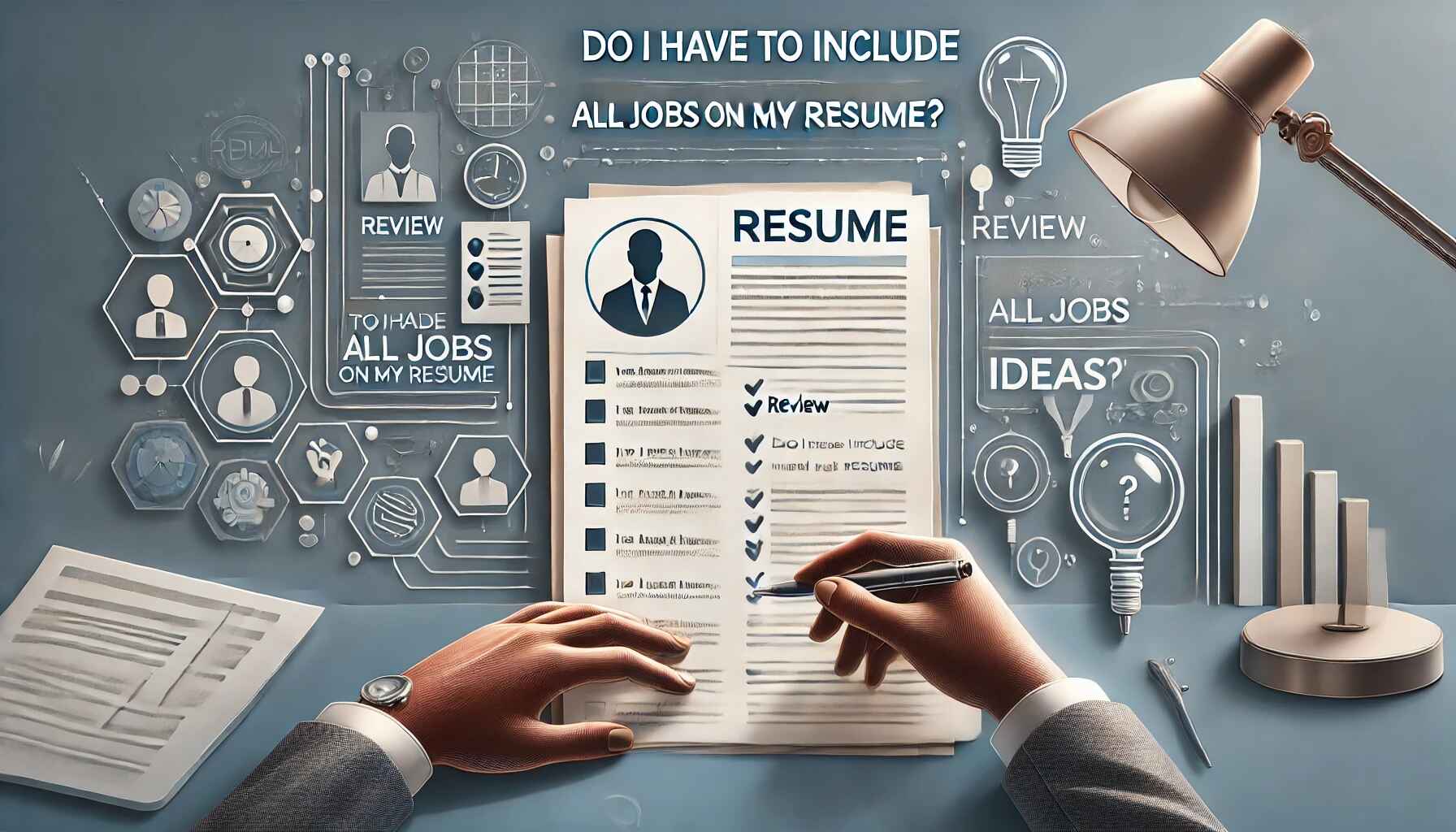Do I Have to Include All Jobs on My Resume?
When crafting a resume, many job seekers ponder this pivotal question: "Do I have to include all jobs on my resume?" The answer often depends on the context, relevance, and purpose of your application. In this article, we’ll explore comprehensive strategies for deciding which positions to feature, how to highlight your strengths, and how to create a standout resume tailored to your career goals.
Understanding Resume Essentials
What is a Resume?
A resume is a document that summarizes your professional experience, skills, and achievements. It serves as a marketing tool designed to present you as the ideal candidate for a specific role.
Importance of Tailoring Your Resume
Every job is unique, and so should be your resume. Tailoring your document ensures that you highlight the most relevant aspects of your career, increasing your chances of catching the recruiter’s attention.
The Purpose of a Resume
Showcasing Your Skills
A resume should reflect your core competencies and demonstrate your ability to perform the tasks required for the job. Highlighting your skills ensures that recruiters see your value at a glance.
Aligning with Job Requirements
Employers look for candidates whose experience matches their needs. Your resume should align with the job description, emphasizing the qualifications that make you a perfect fit.
Assessing Which Jobs to Include
Relevance to the Role
Focus on jobs that align closely with the position you’re applying for. If you’re transitioning to a new industry, highlight transferable skills instead of unrelated roles.
Gaps in Employment History
Address employment gaps thoughtfully. Include freelance work, volunteer experience, or educational pursuits to demonstrate continued growth and activity.
Pros and Cons of Including All Jobs
Benefits of Transparency
Including all jobs showcases a complete picture of your career, demonstrating reliability and a willingness to adapt.
Risks of Oversharing
An overly detailed resume may overwhelm recruiters with irrelevant information. Focus on quality over quantity to make a stronger impression.
Guidelines for Excluding Jobs
When to Leave Out Short-Term Positions
Exclude temporary or short-term roles unless they’re directly relevant. Focus on jobs that reflect stability and progression.
Managing Outdated Experience
Omit older roles that no longer add value, particularly if they date back more than 10–15 years. Highlight recent and impactful experiences instead.
Highlighting Key Achievements
Quantifying Your Contributions
Use metrics to demonstrate your impact. For instance, “Increased sales by 20%” or “Managed a team of 15.”
Using Action Verbs
Begin bullet points with strong action verbs such as “led,” “designed,” or “implemented” to convey a sense of accomplishment and initiative.
Handling Career Gaps
Explaining Gaps Professionally
Be upfront about career breaks and explain them positively. For instance, “Took time to upskill through advanced certifications.”
Leveraging Transferable Skills
Highlight skills gained during career breaks, such as project management or communication abilities developed through volunteering or personal projects.
Formatting Tips for a Polished Resume
Maintaining Consistency
Ensure uniform formatting throughout your resume. Use consistent font sizes, bullet points, and alignment for a professional appearance.
Choosing the Right Layout
Opt for a clean and easy-to-read layout. Reverse chronological format is often preferred, but functional or hybrid formats work well for career changers.
Examples of Strategic Job Inclusion
Crafting Resumes for Different Industries
Tailor your resume to highlight relevant roles. For instance, a marketing resume should emphasize campaign management and analytics experience.
Adapting for Career Changes
If transitioning industries, focus on roles that demonstrate transferable skills and minimize unrelated experience.
Legal and Ethical Considerations
Addressing Background Checks
Employers may verify your work history, so ensure that your resume aligns with official records.
Ensuring Honesty
Misrepresenting your experience can backfire. Be truthful about your roles and achievements while emphasizing your strengths.
Leveraging Technology for Resume Writing
Tools for Optimizing Resumes
Utilize tools like Grammarly, Canva, or LinkedIn’s resume builder to enhance your document.
Benefits of Applicant Tracking Systems (ATS) Compliance
Format your resume with ATS in mind. Use standard fonts and avoid graphics to ensure your resume passes through automated systems.
Frequently Overlooked Resume Mistakes
Avoiding Typos and Grammatical Errors
Proofread meticulously to eliminate errors. Small mistakes can create a negative impression.
Steering Clear of Irrelevant Details
Focus on experiences that add value. Avoid listing hobbies or unrelated jobs unless they contribute to the role.
How Recruiters View Resumes
The Six-Second Scan Rule
Recruiters often skim resumes initially. Make sure your most impressive qualifications are easy to find.
Key Attributes They Seek
Highlight qualities like leadership, teamwork, and problem-solving—attributes that align with organizational goals.
Customizing Your Resume for Success
The Importance of Tailoring for Each Application
Customize your resume for each job application. Address the employer’s specific needs by emphasizing relevant skills and experiences.
Creating Targeted Resumes
Use keywords from the job description to improve ATS compatibility and show you’re a strong match.
FAQs About Resume Writing
Do I have to include all jobs on my resume?
No, focus on jobs relevant to the role you’re applying for and omit outdated or irrelevant positions.How far back should I go on my resume?
Typically, 10–15 years is sufficient unless older experience is highly relevant.Should I include part-time jobs?
Include them if they demonstrate skills or experience applicable to the desired role.How do I address employment gaps?
Be honest and frame gaps positively, highlighting activities like education or volunteering.Can I use a functional resume format?
Yes, particularly if you’re changing careers or have significant gaps.What if I lack professional experience?
Highlight internships, volunteer work, and educational projects that showcase your skills.
Conclusion
Creating a compelling resume is both an art and a science. By strategically including relevant jobs, highlighting achievements, and tailoring your document to each application, you can present yourself as the ideal candidate. Remember, your resume is your first impression—make it count!









